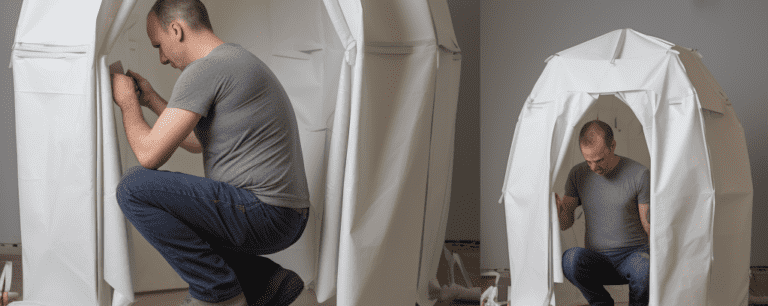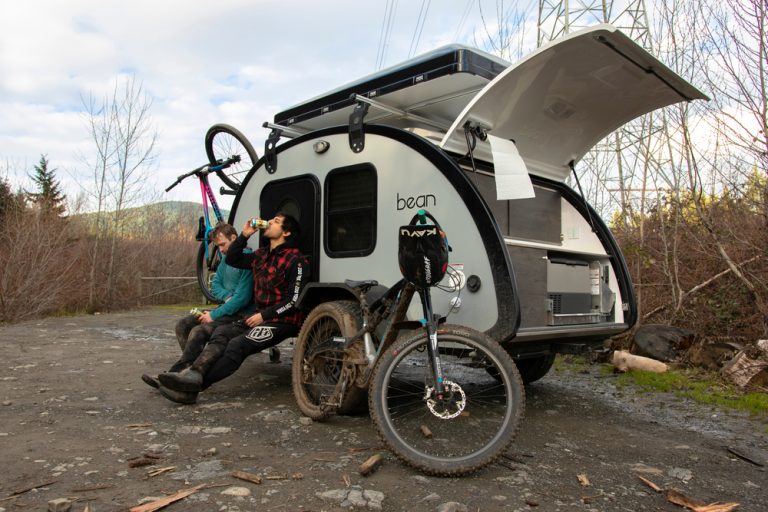There's nothing worse than reaching into your cooler on a hot summer day, ready to quench that raging thirst with an ice-cold drink, only to find it lukewarm!
Or maybe you're planning a lovely evening meal under the stars, but the meat you've brought is spoiled because of the heat. Nightmarish scenarios like these can ruin even the most well-planned camping trips.
But fear not! I've learned through my own trials and tribulations how to keep food cold while camping, preserving its freshness throughout your adventure. Whether you're a newbie camper or an old hand at roughing it in the wilderness, I'll share practical tips on pre-chilling food and drinks, picking out the right coolers, understanding ice packs vs regular ice dilemma and mastering some clever food storage techniques.
You'll also learn alternative cooling methods when nature throws curveballs your way. Let's ensure your next excursion offers culinary delights as stunning as the views around you!
Key Takeaways
- Pre-chilling food and drinks is essential for freshness while camping.
- Good quality cooler with insulation, secure seal, and robust construction is crucial.
- Ice packs are better than regular ice as they stay cold longer and don't leave water.
- Solar powered coolers are eco-friendly and don't need ice or external power sources.
Pre-Chilling Your Food and Drinks
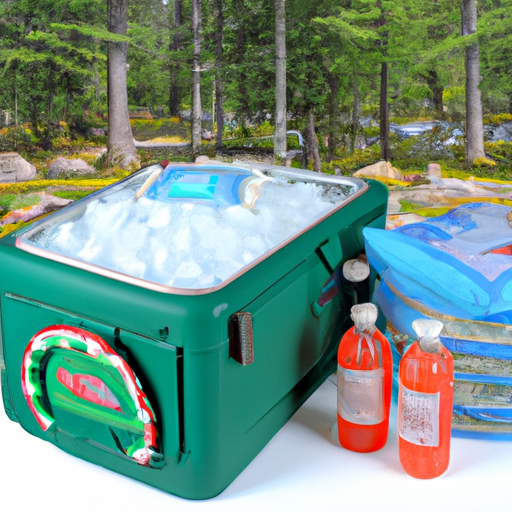
Before embarking on your camping adventure, it's essential that you pre-chill your food and beverages to prolong their freshness while you're out in the wilderness. I've discovered a few practical steps for this process, which include freezer meal preparation and understanding outdoor refrigeration options.
First up, freezer meal preparation is a godsend for campers like us who crave freedom. By preparing meals ahead of time, freezing them solidly before departure ensures they stay cool longer. Think frozen steaks, chicken fillets, or marinated veggies. As these slowly thaw over time, they remain safe to consume.
Secondly, knowing your outdoor refrigeration options is crucial too. A good quality cooler filled with ice can keep perishables at a safe temperature for days on end. Remember, folks, an ounce of prevention is worth a pound of cure!
Using Proper Coolers
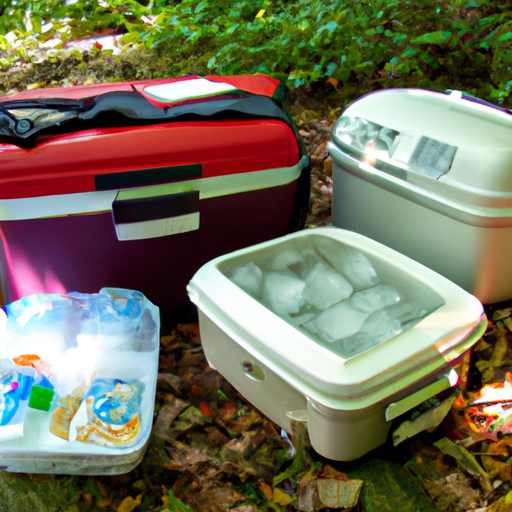
Choosing chillers carefully can ensure your edibles stay crisp and cool for your camping consumption. Cooler selection is crucial in this process; not all coolers are created equal. It's essential to look for those with adequate insulation, a secure seal, and robust construction.
Quality of Insulation: A cooler with superior insulation will retain the coldness longer, preserving my food freshness.
Emotion evoked: Confidence that my food will remain safe and healthy to eat.
Secure Seal: An effective seal prevents warm air from infiltrating.
Emotion evoked: Assurance that external elements won't compromise my food quality.
Robust Construction: A sturdy cooler can withstand the rough terrains encountered while camping.
Emotion evoked: Comfort knowing it'll endure any rugged adventure.
Proper cooler maintenance also plays an integral part in keeping food cold — clean it regularly, pre-chill before use, and avoid direct sunlight where possible.
Ice Packs vs. Regular Ice

When it comes to cooling your edibles, you might be torn between using regular ice or ice packs. Here's a quick ice longevity comparison to help out.
Regular ice will keep your food cold, but once it melts, you're left with a soggy mess. Ice packs, on the other hand, stay cold for longer and don't leave behind any water when they melt.
Pack positioning effects are also crucial in this decision-making process. It's best to place your ice packs at the top of the cooler because cold air descends. This ensures that all items get evenly chilled. If you're using regular ice, spread it around for equal distribution of coolness.
In essence, if you want freedom from worry about melting ice and wet food while camping, go for reusable ice packs!
Food Storage Techniques
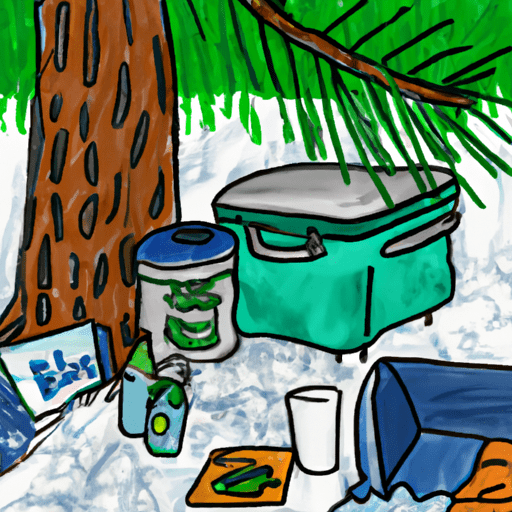
Properly packing your snacks and meals can make all the difference in their freshness, especially during outdoor adventures. It's not just about keeping them cold; it's about using techniques that maintain their quality too.
Vacuum Sealing: One of the vacuum sealing benefits is its ability to remove air from packaging, prolonging food's shelf life significantly. This technique also reduces bacterial growth that could spoil your food.
Insulated Containers Usage: These are perfect for storing perishable items like dairy or meat. They work by slowing down heat transfer, helping your food stay at desirable temperatures longer.
Layering: Pack perishables surrounded by ice or frozen gel packs inside a cooler to create multiple layers of cold insulation.
Remember, camping is all about experiencing freedom and nature without compromising comfort or safety – including your meals!
Keeping the Cooler Cold

When it comes to keeping our cooler cold while camping, there are a few handy tips that can help maintain that chill temperature we need for our food. I'll be discussing these crucial pointers on how to effectively manage your cooler's coolness, and also touch on the frequency of changing the ice.
Remember, knowing how often to swap out the ice is just as important as packing it right!
Tips to maintain cold temperature
You'll be amazed at how long your food can stay cold when you're camping by using some simple yet effective techniques. Thermal blankets, for instance, are a key tool in my camping arsenal. I use them to wrap around my cooler or food containers; they significantly improve the retention of cold temperatures.
Here are three DIY insulation methods that I frequently utilize:
Double-Layer Insulation: Wrap your cooler in two layers of thermal blanket, ensuring there are no gaps.
Insulated Box: Create an extra layer of insulation by placing the wrapped cooler inside a cardboard box stuffed with newspaper.
Cooler Burial: Burying a part of the cooler underground takes advantage of the earth's natural cool temperature.
With these tips, you'll experience true freedom from worrying about spoiled food on your next camping trip.
How often to change the ice
Switching out the ice in your cooler is a crucial task that shouldn't be overlooked. It's not just about keeping food cold, but also ensuring its safety. The importance of this chore is heightened when you're camping – nobody wants food poisoning on an adventure.
Ice longevity can be tricky to master, and it largely depends on your freezer methods and the outside temperature. If you're freezing water bottles or blocks of ice at home before your trip, make sure they're solidly frozen through. Then pack them tightly together in your cooler to slow down melting.
Ideally, you should replace the melted ice daily. But if you notice it's melting faster than expected due to heat exposure, switch it out more frequently. Stay proactive – remember, freedom includes freedom from illness!
Alternative Cooling Methods
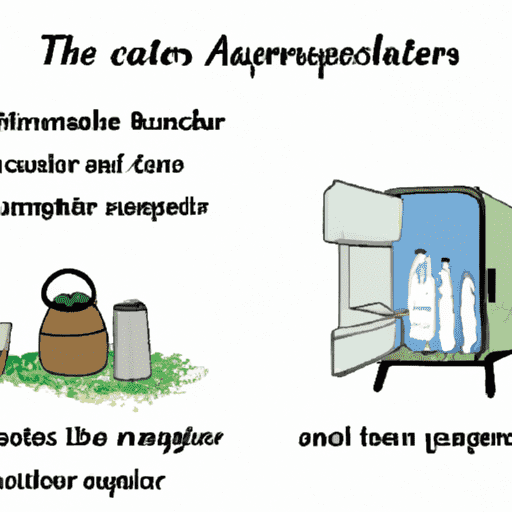
Innovative alternatives for keeping food cold while camping can indeed be a game changer, especially when traditional means fail. A little creativity opens up fresh possibilities like natural refrigeration methods and solar powered coolers.
One favorite method is harnessing the power of nature. Burying your goods in the ground or suspending them in a nearby stream can keep them cool. Solar powered coolers are also an exciting option. They're eco-friendly, require no ice, and free you from dependence on external power sources.
| Natural Refrigeration Methods | Solar Powered Coolers |
|---|---|
| Makes use of surrounding environment to lower temperature. | Runs using solar energy; doesn't need electricity. |
| Requires digging a hole or finding a running stream. | Can function wherever there's sunlight exposure. |
| You don't need extra equipment or supplies. | It may cost more initially but saves money over time by eliminating ice purchases. |
| Dependent on location and climate conditions. | Works regardless of location as long as there's sun exposure. |
These options give me freedom to enjoy my camping experience without worrying about how to keep my food cold!
Conclusion
So, there you have it! Keeping food cold while camping is as easy as pie once you've mastered the techniques. From pre-chilling your grub to using proper coolers and ice packs, to smart storage methods, it's all about being prepared and innovative.
And remember, a well-packed cooler can be your best friend out in the wild.
Happy camping!



